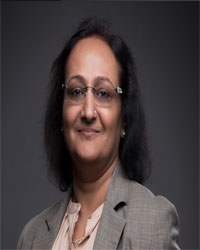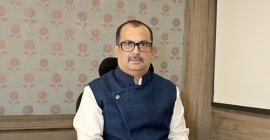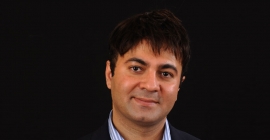‘Global brands seek more creative use of OOH’
By Bhawana Anand - November 12, 2018
Anita Nayyar, CEO - India & South Asia, Havas Media Group and CEO - Havas Group, North India shares her perspectives on the key factors that will induce global brands to go big on Indian OOH canvas

Global brands like Google, Netflix, Facebook and others have been rolling out their global OOH campaigns in India. What is driving this trend? Is it the attractiveness of the Indian consumer market or the quality of OOH media now available in India, or indeed a bit of both?
Certainly, the customer namely the Indian millennial is attracted to all global brands and the OOH media quality has also evolved. These global brands are promoting their product offerings with what is required by the audience panning across both data and speed. The campaigns talk about Google Maps/Assistant, Netflix’s Stranger Things/programs and Facebook’s Live what you Love campaign (more a push following its fake news and data scandals).
Reliance Jio disrupted the market making data affordable not just for the affluent but got a third of India online, setting the field for a whole new game. With Indian OTTs playing the market first, these global brands need to capitalise on gaining market share.
So, while the ad formats have not drastically changed, low data cost is the differentiator making a millennial or an Indian on the move, irrespective of tight or loose purse strings, switch to mobile - TV and web, be it for a Netflix show, IPL, Facebook or such.
Globally highly trusted and aspirational, these brands can leverage their equity to speak one universal language as the position, proposition and usage of their rolled out product/service is also universal. The shows are being telecast in real time with no delays and the audiences no longer have to wait for the new seasons of these shows.
Masters of making things simple, these brands craft one well thought message which they use at a global level across countries. However, there is no rule on this, for example, Google Map’s #LookBeforeYouLeave (for real-time traffic) had locally flavoured ads which connected well with the audiences.
Is the presence of global brands on the Indian OOH landscape augmenting the overall quality of OOH media offerings and services in the country? Do you see the OOH ecosystem delivering a lot more to the advertisers?
Global brand campaigns innovatively use OOH with high creativity. Having these brands here has spurred an OOH evolution; though in terms of both offering and scale, India lags far behind.
Yet, digital formats are coming into play, format adaptation is becoming more agile, technology is being integrated and there is more monitoring.
What is the planning that goes in for global brand campaigns in India, as opposed to the OOH planning for national brands?
It depends on brand messaging and campaign and the audience- -- national or global.
Would you suggest any takeaways for the national brands from the way global brands approach India via OOH?
These global brands have high recognition and leverage it with a high impact guerilla approach. With deep pockets they capitalise on market share, customer buy-in and then they are done. For them it is about image, dominance and being No.1.
We’ve seen high impact when e-commerce dominated and was the flavour of the year. Even the e-wallet demonetisation story made Paytm No.1.The focus is on a single product servicing an immediate customer need.
On the other hand, local brands like Marico, Amul and even HUL for that matter, have to advertise over a longer period and thus use a sustained approach where they are present throughout the advertising life cycle of the industry, and year-on-year.
At the global level brands indulge their customers with OOH innovations, something we could also learn. But, this is possible because of their technology, format options and infrastructure as well as government laws which allows for those wow campaigns.
What steps would bring a greater number of global brands to the Indian OOH market?
Overall, transparency in buying and audience measurement, audience profiling, a comprehensive ROI matrix, digital OOH, and an upgrade in formats to international standards would definitely increase the OOH ad-ex.
In fact, there are many global brands which don’t use outdoor OOH given our national and state regulations. However, in a mall setting you see them run the same global ads on digital formats, e.g. lingerie brand Victoria Secret or a Roche Bobois for furniture.

Stay on top of OOH media trends









